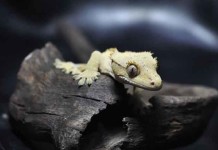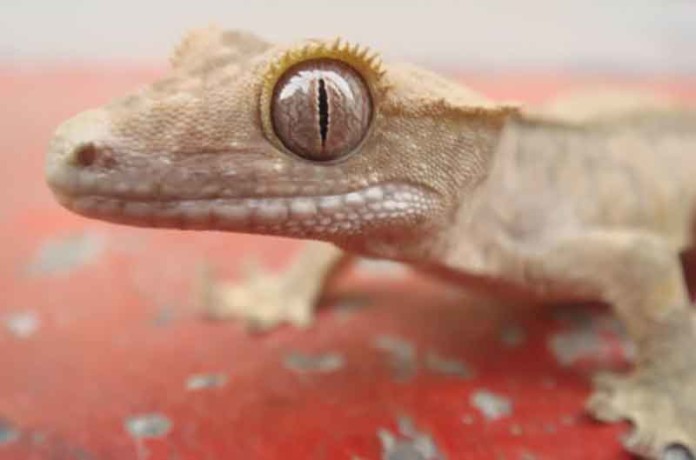Crested gecko shedding is a normal part of this reptile’s cycle. They will normally shed their entire skin at once, starting at the snout and working its way down the rest of the body. Generally, shedding is not a problem for the crested gecko. However, if the gecko is not properly cared for, problems may be encountered. Adequate hydration and humidity are important factors in the shedding of crested geckos.
The Shedding Process
The crested gecko consumes its skin in the shedding process. It begins by licking off the skin that is ready to shed from the snout and then chewing or rubbing it off the rest of the body. Young geckos will shed more frequently, as they are growing more rapidly.
It is vitally important for the crested gecko to have the proper humidity level and hydration for it to shed completely. It is a good idea to check your gecko after its shed to ensure that it is complete. Pay extra attention to the areas around the toes and tip of the tail. Skin left in this area can restrict blood flow and cause the toes or tail tip to die and fall off.
 If you notice skin around the toes that will not come off easily with a pair a tweezers, soak the gecko in a container of shallow water or wet paper towels for 30 minutes. If the skin does not come off easily, let them soak for another 30 minutes and try again. Do not try to force the skin off. Remove the skin gently with the tweezers.
If you notice skin around the toes that will not come off easily with a pair a tweezers, soak the gecko in a container of shallow water or wet paper towels for 30 minutes. If the skin does not come off easily, let them soak for another 30 minutes and try again. Do not try to force the skin off. Remove the skin gently with the tweezers.
To keep the crested gecko shedding properly, mist the enclosure each night and let it dry out during the day. If you notice that your gecko is having incomplete sheds, try misting twice a day or change the substrate to a more moisture-absorbent substance such as peat.
Dysecdysis
Dysecdysis is the term used for when the crested gecko does not shed properly, otherwise known as an incomplete shed. It is generally caused by low humidity and can be remedied with daily misting of the enclosure. You can also provide decorations that the gecko can rub against to help facilitate its shedding process.
The crested gecko shedding process is a normal part of their life. To maintain a healthy shed, make sure to supply their enclosure with the proper amount of humidity by misting daily. An incomplete shed can lead to restriction of the blood flow to the reptile’s extremities and should be monitored, especially when they are very young.














